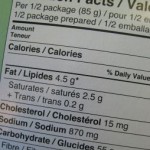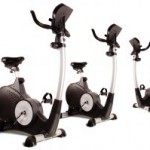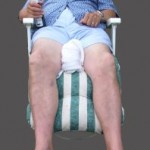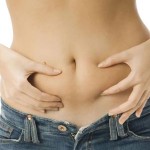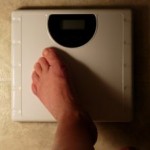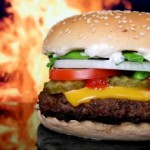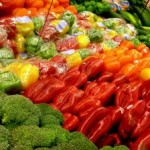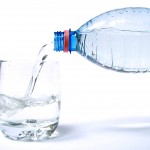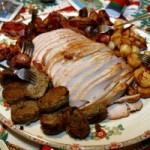Welcome back!!
Hi folks – just a quick one today – here are 3 ways to shape shift…
Shifting you shape is all about altering the composition of your body so you have a greater proportion of lean tissue and less fat.
Shape Shifting deals with complex biochemical processes, metabolism, mental attitude and hormones. It is not a simple thing to do. But the actions you can take to achieve greater leanness and less body fat can start off simply enough.
1) Try to eat “single ingredient” foods as much as possible
Diet accounts for over 80% of your efforts to recondition your metabolism and alter your shape so it is important to begin to get it under control.
If you are buying packaged food check your labels. The fewer ingredients listed (especially the fewer chemical names & numbers & different sugar types) the better. Avoid anything with Transfats listed as more than 1% ( zero is better) or anything that screams Low fat but is full of sugar – if fact if any food you buy is over 10% sugar you probably should give it a miss.
Even better try to increase the fresh component so that you are buyibng the majority of your food so fresh that it has NO labels! Think Lamb & Letuce, Beef & broccoli etc etc.
Our bodies just run better on whole foods and the less procesing involved the better for us & our health. These foods are typically more nutrient dense, usually calorie sparser and give us feelings of satiety more quickly and for a longer period of time.
The exception to this is canned & frozen foods like vegetables and beans. Nutritionally these are usually as good for you as fresh food (in some cases even better).
Again check the labels for high suagr or sodium – avoid any with these in high proportions. Use the Single Ingredient rule – the fewer items listed on the label the closer to nature and less processing that has taken place.
2) To Shape it you’ve got to Move it!! – Move more…
An effective metabolism is your greatest tool for fat loss and better health. If you don’t move your metabolism slows down.
This does not mean that you have to live in the gym but that you should incorporate a range of physical activity into your daily life. So go to the gym (3 times a week no more than 1 hour at a time) to lift heavy weights, walk every day, climb hills, go padddle Boarding, ride a bike, do dance classes (even Zumba), wrestle your kids, throw the ball for the dog, re-arrange the furniture – whatever hits your switch, If they stop swimming sharks diejust move!!If you work in an office download this free little timer (http://www.harmonyhollow.net/cool_timer.shtml) set it for 45 minutes and when it goes off stand up and go for a quick walk, do a few squats – anything but get out of the chair! Then reset it for another 45 and get back to work. Your metabolism & back will thank you.
Studies have shown that people who walk 10,000 steps or more a day are happier, less stressed and have higher energy levels…
Your metabolism slows down if you don’t move and you fat goes up. Remember our bodies were designed to move…
3)Sleep on it…
Studies have shown clear links between lack of sleep and fat gain. We live in times of long work days, meals on the run and watching late night television to ‘wind down’. The net effect is that we are sleeping less and our bodies, in particular our metabolisms are paying for it.
The biological rhythm of sleeping and waking is called our circadian rhythm. And this is intricately tied to our metabolism.
Researchers have discovered (Science 1 May 2009: Vol. 324 no. 5927 pp. 654-657 DOI: 10.1126/science.1170803) that an enzyme protein called SIRT1 interacts with a protein nicotinamide adenine dinucleotide (NAD for short) that senses cell energy levels and modulates metabolism and aging. In other words there is a tightly regulated co-dependency between your circadian clock and your metabolism and cellular performance.
This also suggests that proper sleep and diet may help maintain or rebuild the balance between your circadian clock and your metabolism, and could also help explain why lack of rest or disruption of normal sleep patterns can increase hunger, leading to obesity-related illnesses and accelerated aging.
So if you regularly deprive yourself of sleep, you’re effectively disrupting your biological processes, including those regulating your metabolism. The news gets worse – lack of sleep has been shown to affect levels of leptin and ghrelin, the two major hormones linked with appetite and eating behaviours. When you are sleep deprived, your body decreases production of leptin, the hormone that tells your brain there is no need for more food. At the same time it increases levels of ghrelin, a hormone that triggers hunger.
The end result is decreased satiety, hunger pangs, and a sluggish metabolism…
So what is the right number of hours of sleep to get? Truth is there is no one-size-fits-all number of prescribed hours, although there’s some evidence indicating that somewhere around seven hours a night is ideal from a general health perspective.
If you are waking up feeling sluggish you need more.
So there you have simple ways to begin to ‘Shift your Shape’
Let me know how you go with them.
That’s it. And it really can be that simple. No gimmicks. No fads. Just small, proven life changes that have a lasting impact.
And that’s what Body Shape Shifters is all about — permanent long term change based on skills you take with you. Knowledge is power, and we’re sitting on top of fuel grade uranium!

